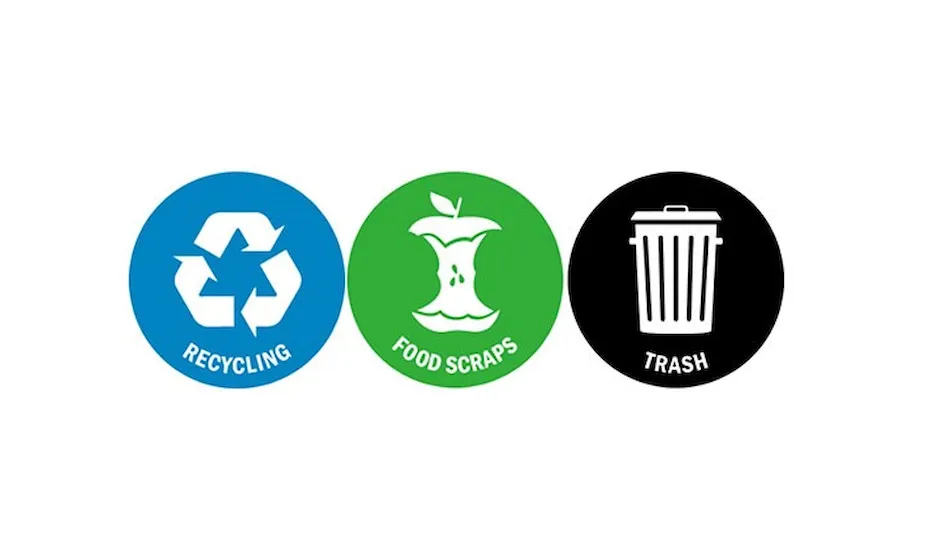
The number of food scrap haulers in Vermont has doubled to 13 facilities since the state passed its food scrap ban, according to Josh Kelly, who oversees the materials management section at the Vermont Department of Environmental Conservation (VDEC).
Massachusetts’s commercial organics disposal ban has also led to increased hauler infrastructure. John Fischer, the branch chief for commercial waste reduction and waste planning at the Massachusetts Department of Environmental Protection (MassDEP), reports a 70 percent growth in hauler collection systems from 2014 to 2018, with 45 facilities now providing food scrap collection services in the state.
A 2016 study conducted by MassDEP to understand the economic impacts of its commercial organics disposal ban concludes the ban has generated 900 new jobs and $175 million in economic activity with $50 million planned in future facilities and capital investments.
“A lot of that is going to anaerobic digestion,” Fischer says. “The single most exciting this to me about these numbers is the estimated $50 million planned in future infrastructure.”
Roughly 85 percent of Vermont municipalities are using drop-off locations to collect food scraps and facilities are using traditional composting methods, but Kelly and Fischer say that is subject to change. Over the years the bans have been phased in, they have seen significant growth in anaerobic digestion facilities. Residential curbside food scrap programs will also be an area to watch over the next few years.
“Compost is still where most of our material goes, but that’s rapidly changing,” Fischer says. “We have more and more going to anaerobic digestion. I don’t think it will be long before anaerobic digestion is bigger than composing.”
Kelly adds, “We have some growth in residential curbside services. It’s a slow grow, but we’re seeing more and more businesses trying to expand services to service residents at their home.”
Kelly joined VDEC in 2013 to help implement Vermont’s Universal Recycling law, which he says stems from a 2013 study that found 28 percent of the state’s landfill-bound waste was organics. More than 20 percent of the waste steam was paper, and 11 percent plastics.
As part of a phased in approach, the recycling law requires haulers to offer food scrap collections by 2020. VDEC estimates the ban will help capture and divert about 60 percent of food scrap from landfill.
Fischer coordinates MassDEP’s programs to advance waste reduction, recycling and composting by businesses and institutions in Massachusetts. As a result of the state’s commercial organics disposal ban, 280,000 tons of food scrap has been diverted from landfill. By 2020, the department aims to capture an additional 350,000 tons of food scrap per year. Fischer is optimistic the state will meet the goal because food scrap diversion programs have grown 5 percent from 2016 to 2017, he says.
He estimates that with the growth of anaerobic digestion facilities, Massachusetts will have the capacity to process 600,000 tons of food scrap per year compared with a 150,000-ton capacity with current traditional composting sites.
Portland, Oregon, recently adopted a policy that requires large scale food-generating businesses to separate food scraps from the waste steam. The new law requires large food service businesses—restaurants, hotels, schools, hospitals—to separate food scraps by 2020.
The ordinance also requires local governments to adopt mandatory commercial food scrap programs by July 2019, according to Holly Stirnkorb, senior solid waste planner for Metro, the regional government in the Portland metropolitan area. She says about 3,300 businesses, of which 60 percent are restaurants, will be affected by the ban.
Stirnkorb says governments will submit quarterly reports to ensure businesses are compliant with the law. She also says Metro is tracking waste, including commercial food waste, that enters transfer stations and hauler facilities through Re-Trac Connect, a municipal waste measurement program.
Kelly and Fischer emphasize that food scrap bans only capture an estimated 50 to 60 percent of food scraps from the waste stream. They also say food scrap bans must be phased in over a period of years and accompanied with a comprehensive strategy.
After Vermont passed its recycling law, Kelly says the VDEC created new symbols as part of community outreach to educate residents and businesses that food scrap no longer is accepted in the waste stream. He says the symbols will help “move us toward a three-bin future.”
Kelly also notes Vermont in 2018 created an interactive materials management map that puts all businesses and institutions that produce large amounts of food scrap in proximity to their transfer stations and composting locations.
In terms of growing recycling infrastructure in Massachusetts, Fischer says MassDEP offers a variety of recycling grants and loans, including a recycling business development grant program, a sustainable materials recovery program for municipalities and construction grants for anaerobic digestion facilities.
His word of advice: “Watch markets. Listen and adapt. Use funding. Provide a path forward for facilities. Enforce carefully” and spend time on “outreach and education on the front end.”
Kelly, Fischer and Stirnkorb recently presented on their state organics bans as part of a U.S. Environmental Protection Agency (EPA) webinar, “State and Local Organic Bans- Implementation Planning, Lessons Learned and Updates.”
Latest from Waste Today
- US Composting Council grant will fund data collection
- Enviri releases annual ESG report
- Waste Connections enjoys income, revenue boosts
- Machinex recognized as Recycling Equipment Innovator of the year
- WM announces solid Q2 growth
- Reworld partners with Genpact
- Waste Pro earns favorable financing rating
- Amberjack announces exit from investment in Best Trash





